The Hawaiian word laiki means “rice,” and when you see these delicate little shells, you’ll understand why. Laiki shells (ライキ シェル) are long, oval-shaped, and just about the size of a grain of rice — slender, shiny, and full of beauty. They come from the species Mitrella margarita. An individual shell measures about 9 mm in length and 5 mm in diameter.
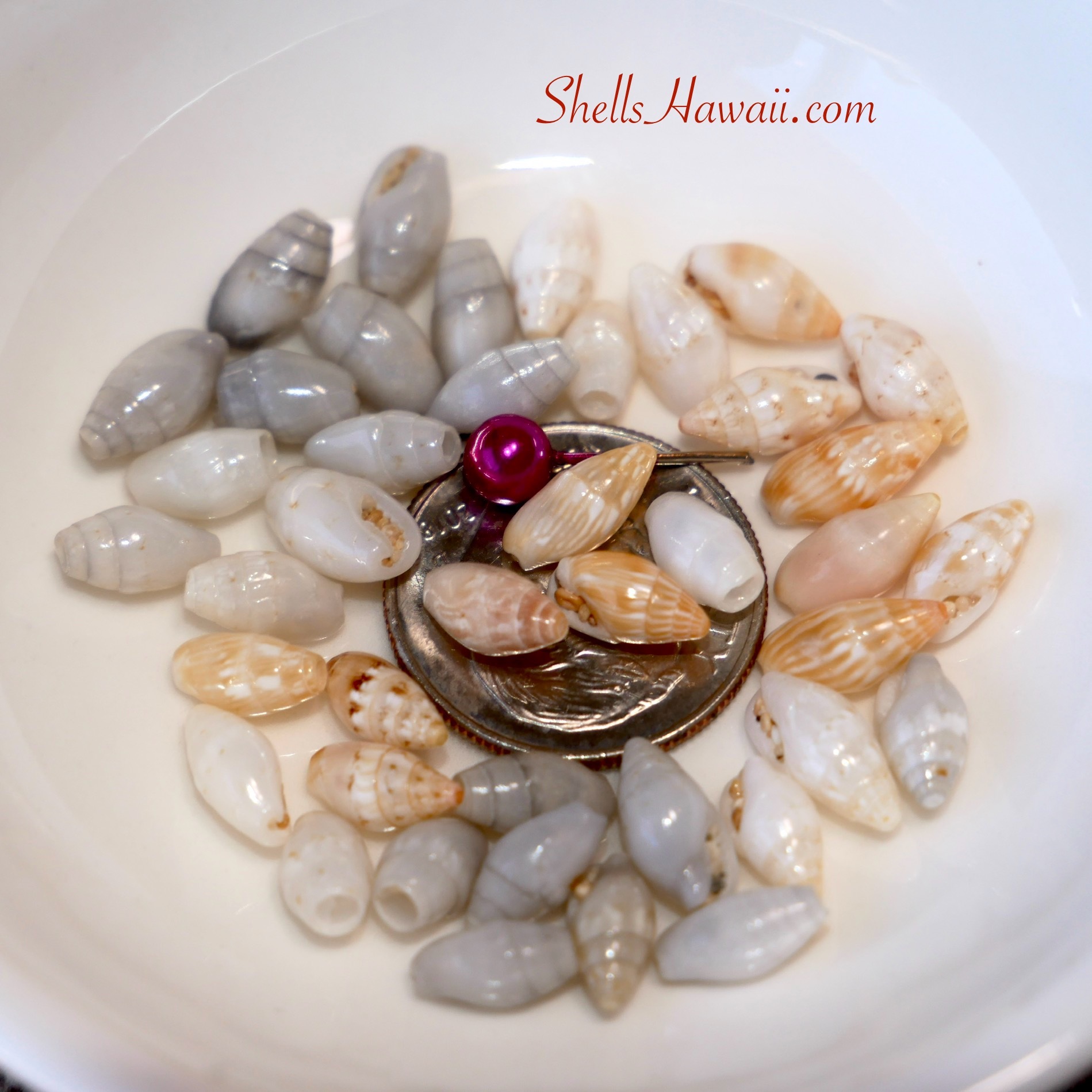
In Hawaiian jewelry (ハワイアンジュエリー), Laiki shells are known for their gentle shimmer and elegant shape. They are often strung into many-strand lei, adding soft movement and grace with every layer. The shells’ natural flow creates a draping effect that feels both traditional and timeless — a true celebration of craftsmanship and aloha. If you’ve been learning about Hawaiian seashells and Niʻihau shell jewelry (ニイハウ シェル ジュエリー), you’ll see how Laiki shell lei stand out as treasures in their own right.
➡️ If you’re just getting to know Hawaiian shells, you might also enjoy my blog about Kahelelani shells — tiny treasures from the Columbellidae family that come in an incredible rainbow of colors.
✨ Colors and Variations
Laiki shells (ライキ シェル) are known for their soft flow of natural shades, often blending from one tone to another in ways that are hard to pinpoint. No two are ever exactly alike, which is part of what makes them so beautiful in Niʻihau shell jewelry (ニイハウシェル ジュエリー).
The most common Laiki colors are:
• Creamy white and off-white (Tuaʻula) — often the most plentiful, giving a gentle glow.
• Soft tan to light golden brown — warm and natural, found often in bulk collections.
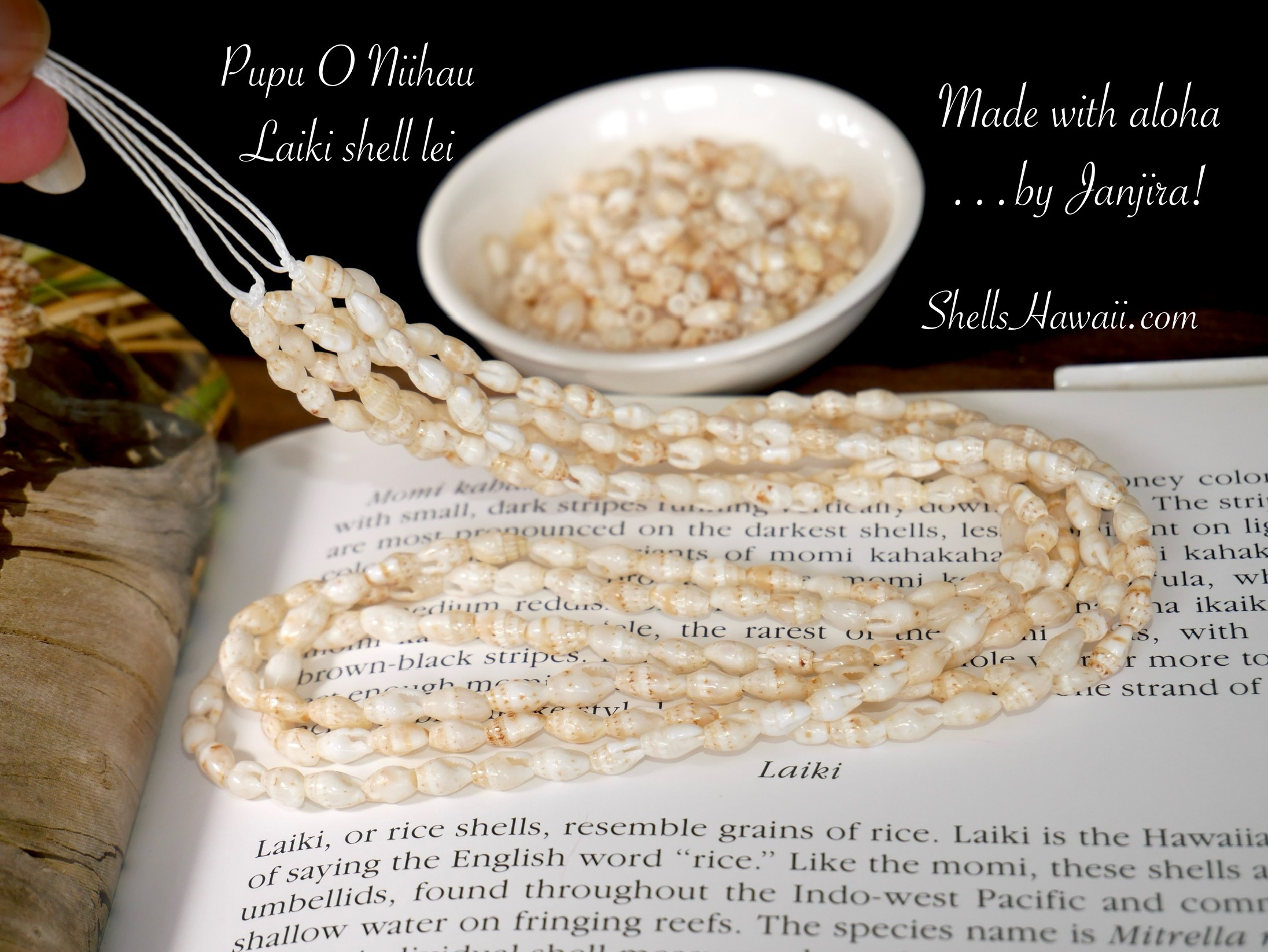
- Striped and banded shells — alternating rings of brown and white that create rhythm and texture.
- Freckled shells — light bases with tiny brown speckles scattered across them.
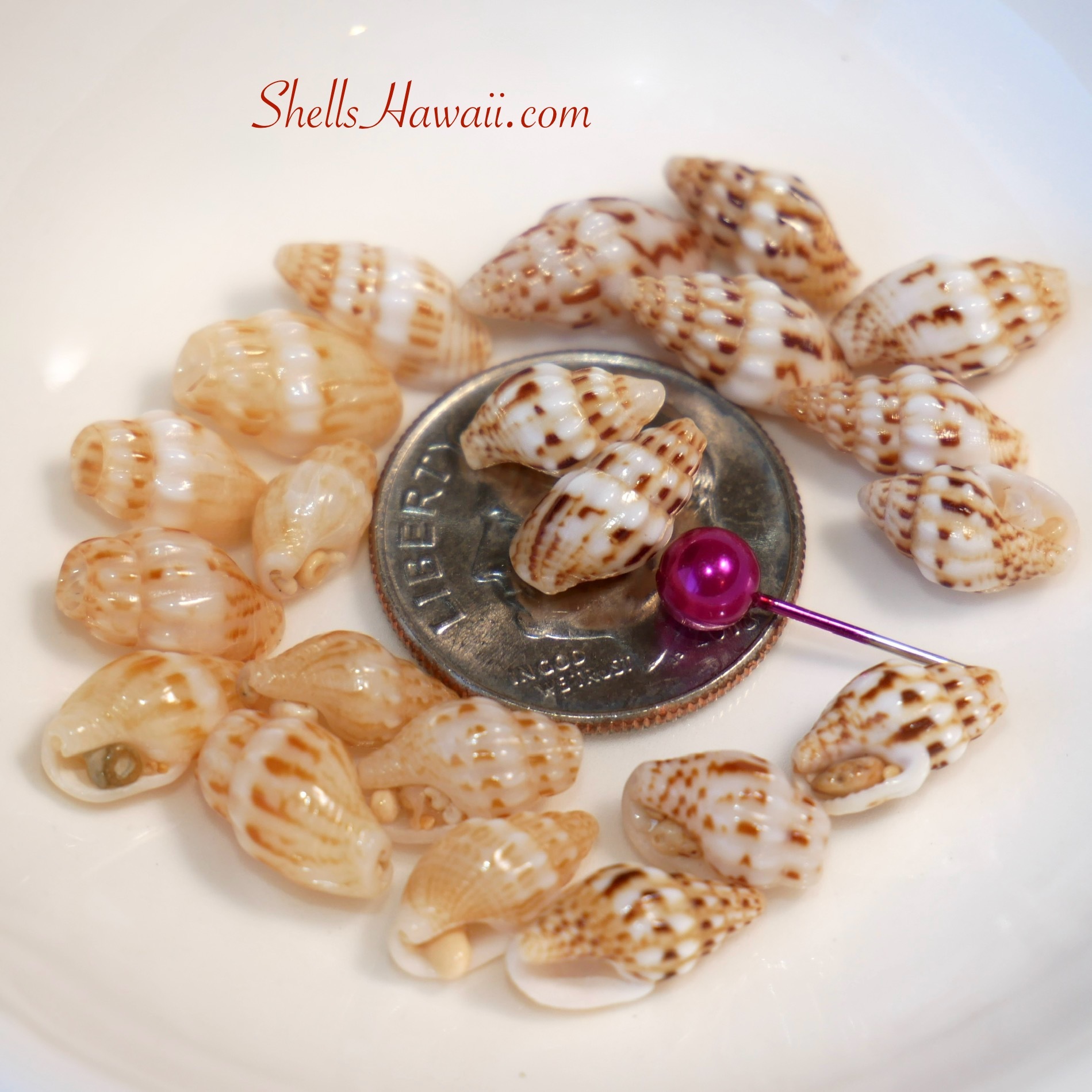
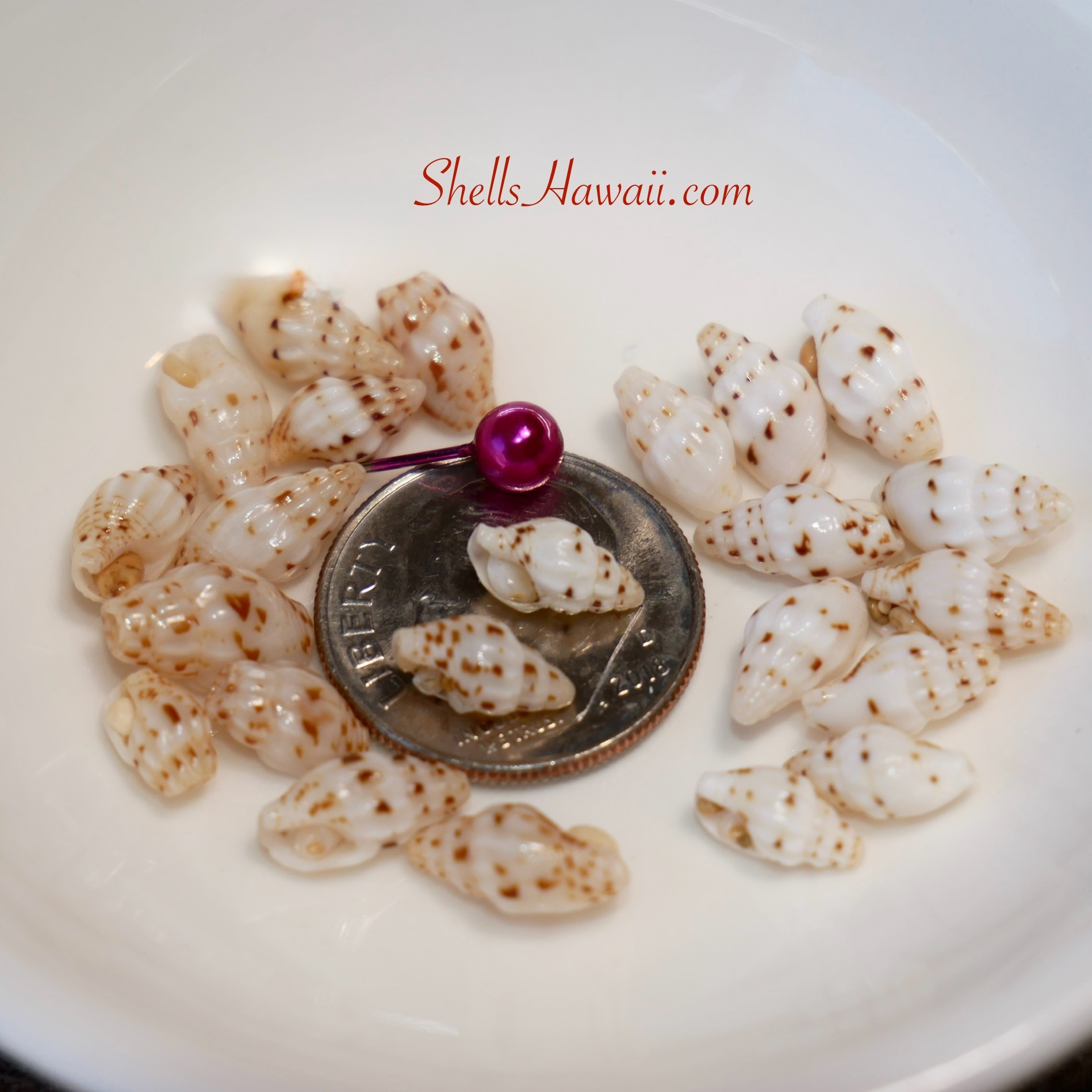
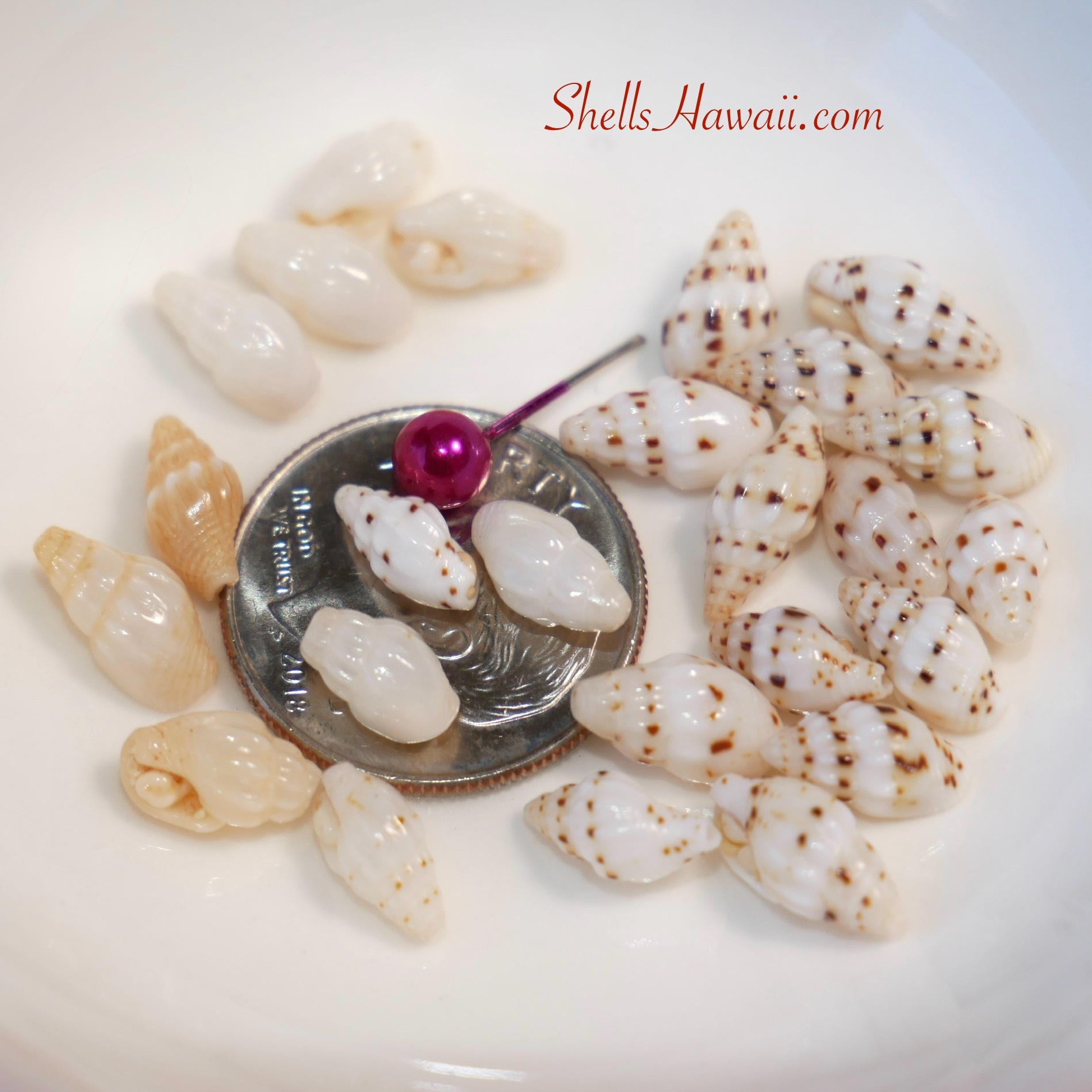
Alongside these familiar tones, there are a few colors that are much harder to find:
Deep golden honey — rich, glowing shades that shine like sunlight.
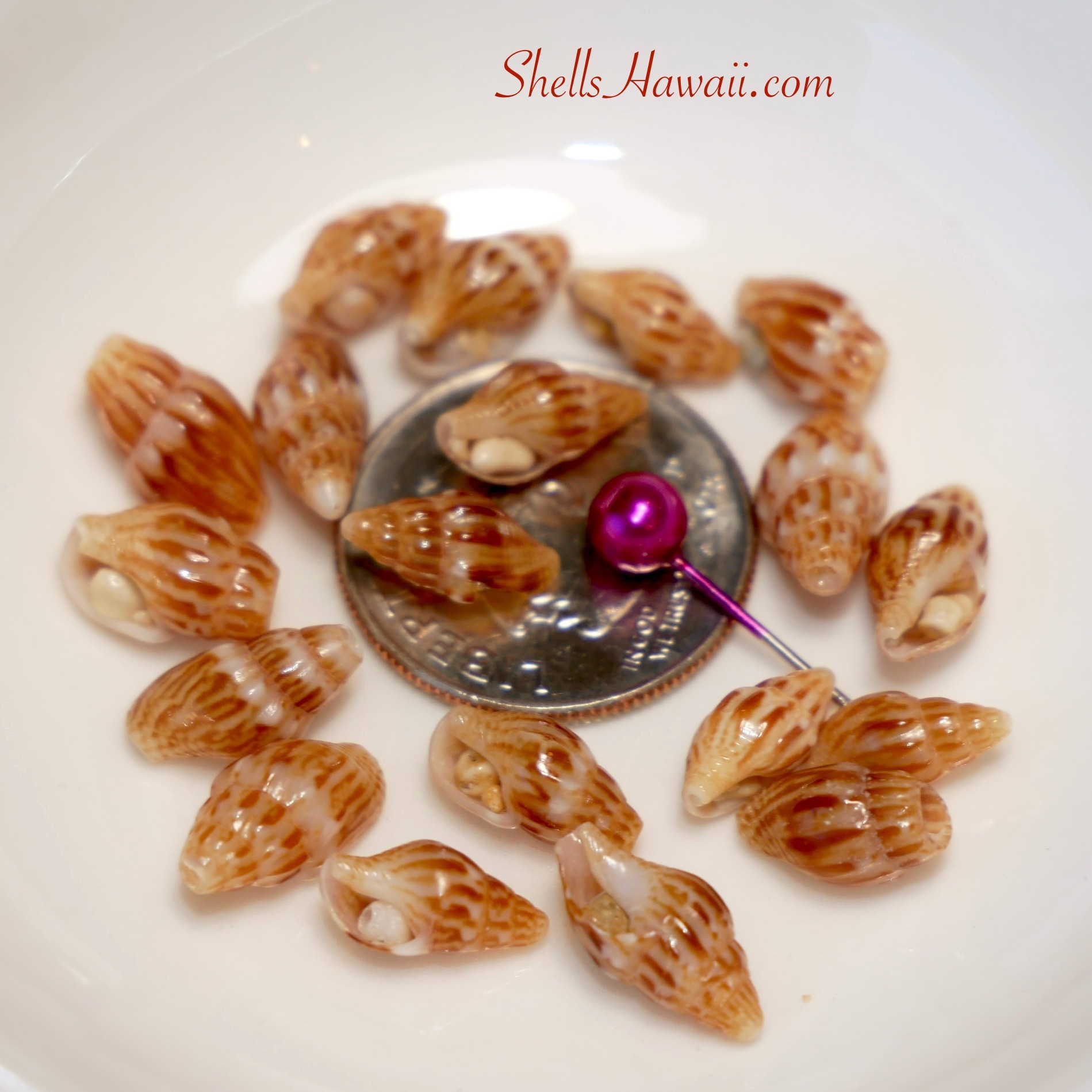
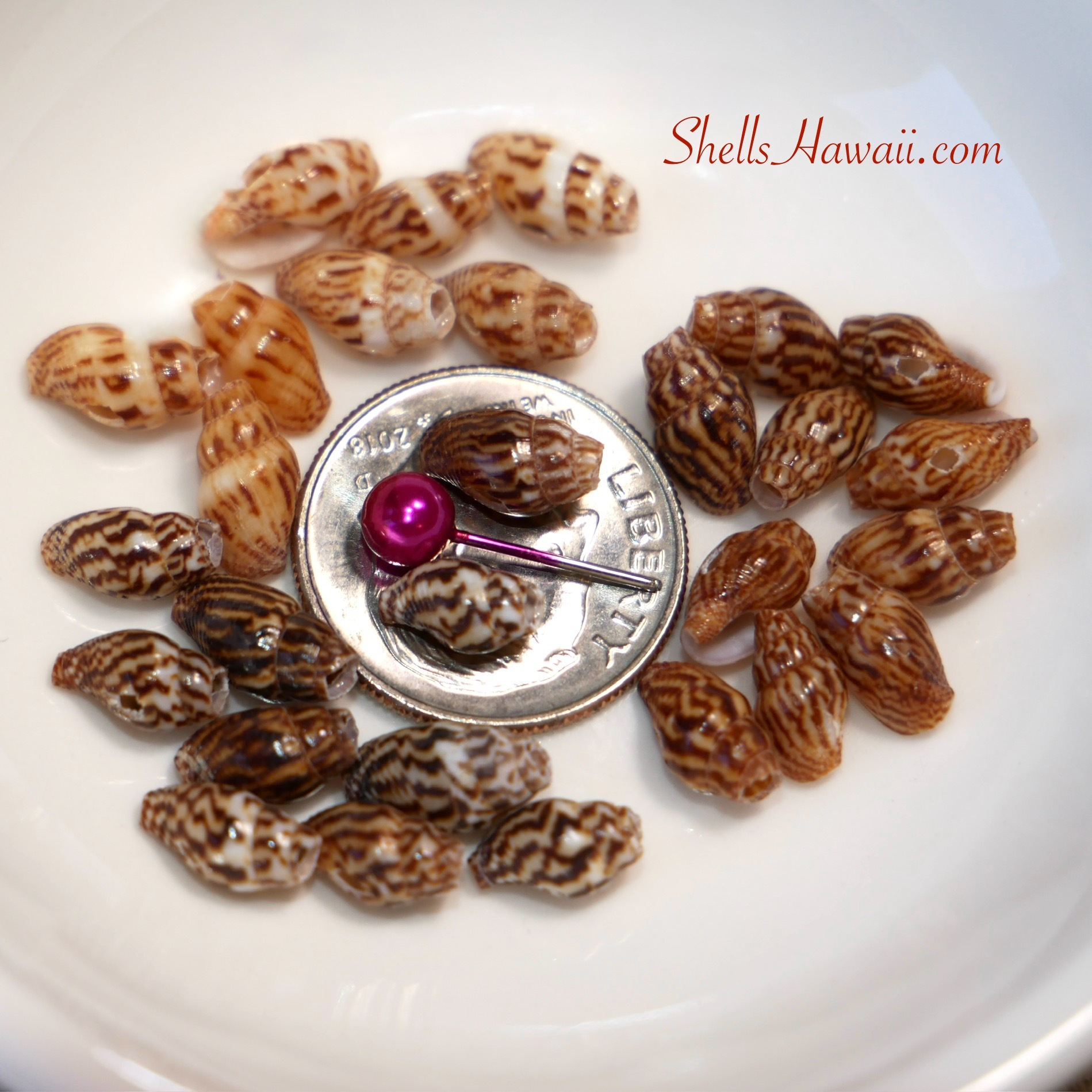
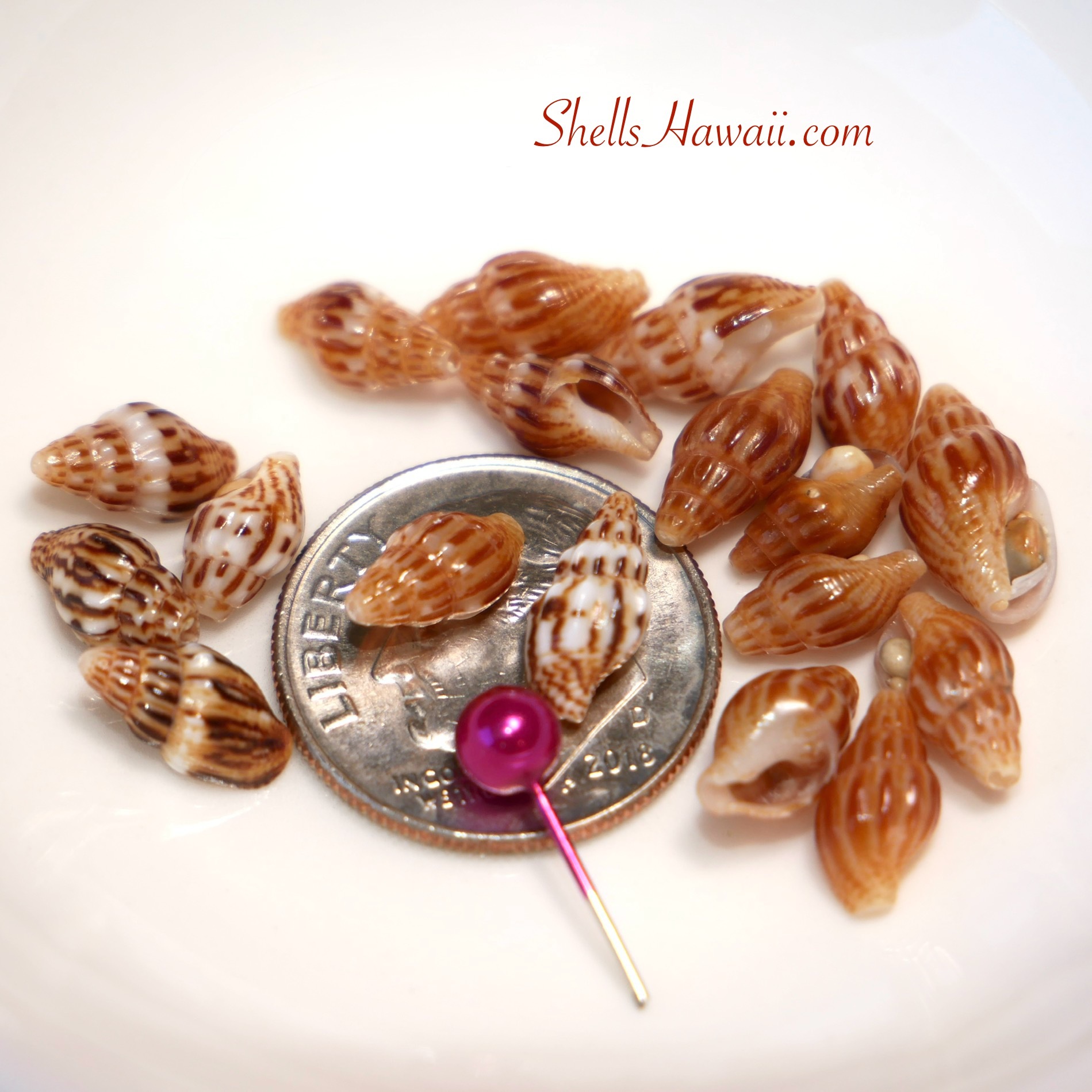
Pearl white — luminous, smooth shells that almost look polished.
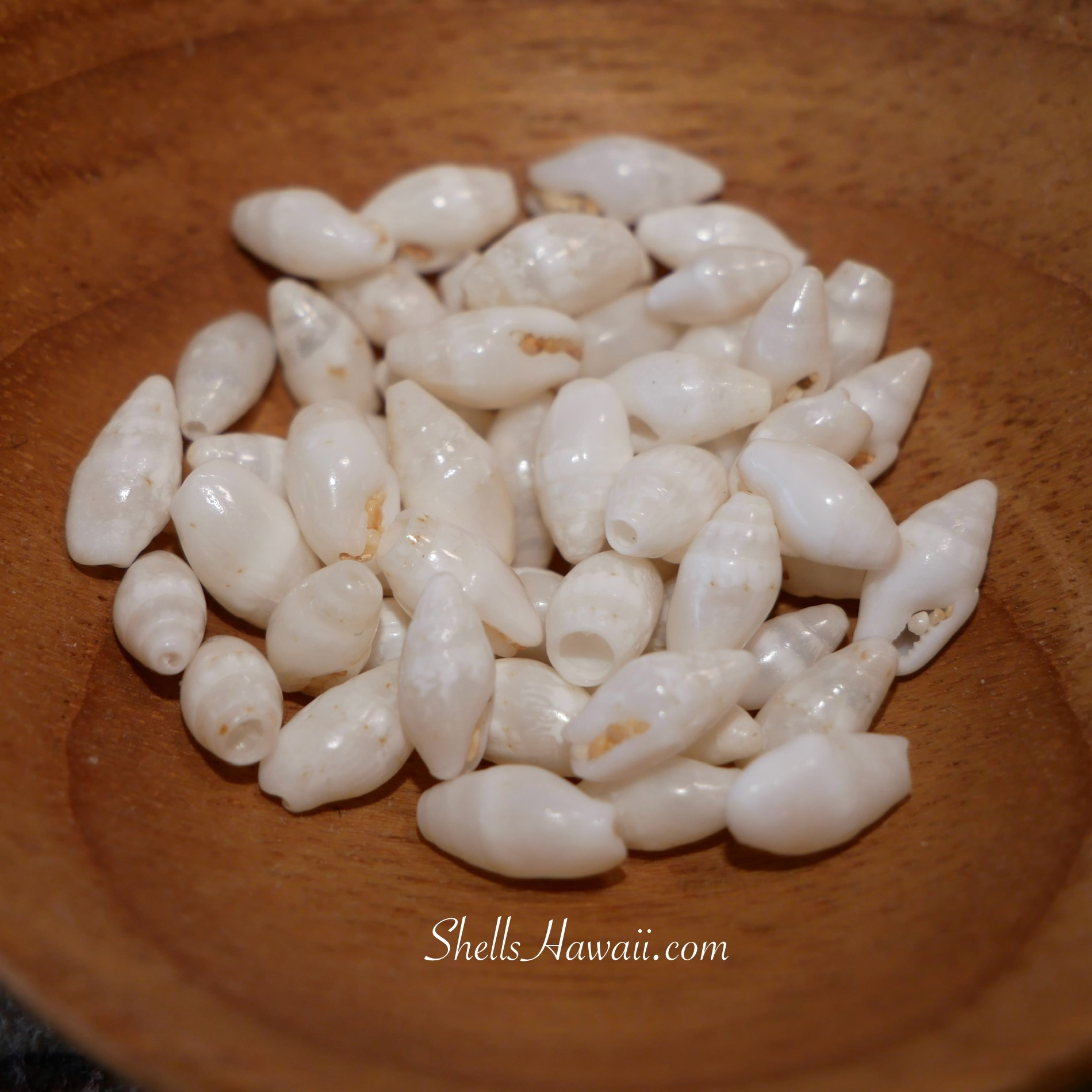
Smoky blue-gray — soft ocean-mist colors that are among the rarest of all.
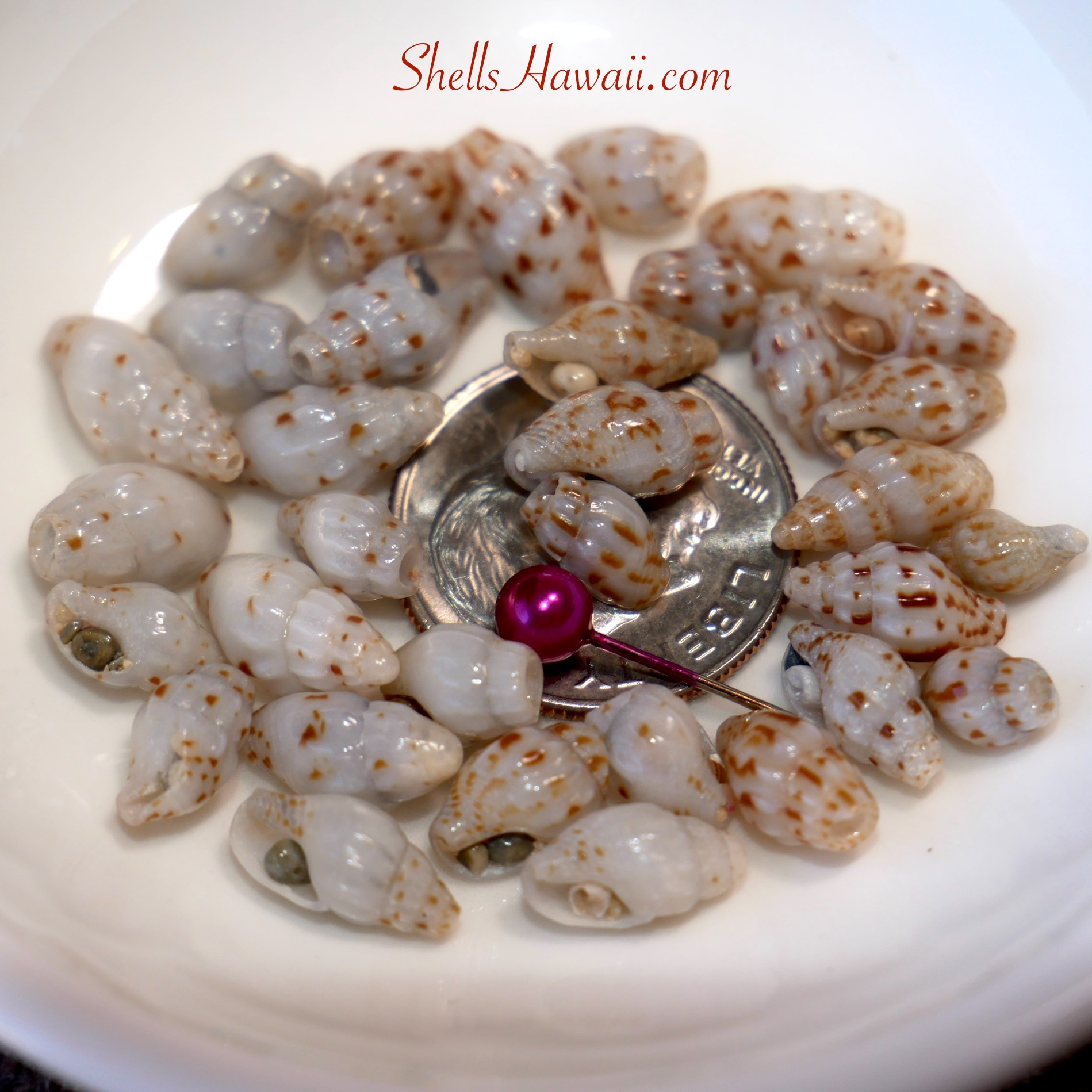
Part of what makes Laiki so special is that their colors are shaped by how the shells grow. Some live long enough to fully form their natural hues, while others may stop earlier, leaving lighter or softer shades behind. This natural process is what makes Hawaiian seashells used in Niʻihau shell jewelry truly unique and one of a kind.
Even if you use the same type of shell in the same pattern or design, the outcome will never be identical. Each Laiki shell lei carries its own mix of colors and forms, shaped by the ocean’s hand. That’s why, when you wear Niʻihau shell jewelry made with Laiki, you’re wearing something that exists only for you — no other person in the world has the same exact piece.
⭐ These unique shades always remind me of Kahelelani shells (カヘレラニ シェル) — tiny but full of incredible colors. If you’d like to learn more about those, I’ve shared a full blog about how Kahelelani colors form.
Laiki shells grow across a wide spectrum — they aren’t all the same size, and that’s part of their charm.
- Tiny Laiki (3–4 mm) — slim and delicate, like miniature grains of rice.
• Medium Laiki (5–7 mm) — the most common size, often used in multi-strand wedding lei.
• Large Laiki (8–11 mm) — plump, oval-shaped, and glossy. These add body and weight to a lei, giving it a bolder presence.
And just as important as size is shape. Some Laiki are smooth and slender, looking almost exactly like grains of rice. Others are fuller, with a rounder or slightly barrel-like form. This difference happens naturally, but they are still all part of the Columbellidae family, making them close relatives of Momi shells (モミシェル).
This natural variation in size and shape is one of the reasons why every Niʻihau shell piece feels alive and unique — no two shells, and no two lei, will ever look exactly the same.
❤️Laiki Shells in Traditional Niʻihau Jewelry
In Niʻihau shell jewelry (ニイハウシェル ジュエリー), Laiki shells are especially treasured in formal lei. Heirloom wedding lei often used 20 or more strands of Laiki, symbolizing aloha, commitment, and grace.
They are usually strung side-by-side in the Kui Pololei style — which means “straight stringing” in Hawaiian. In this method, each shell is lined up evenly and sits flat next to its neighbor, creating a smooth, uniform look. This is the technique that gives Laiki wedding lei their clean and elegant flow, almost like silk fabric draping across the chest.
That’s why Laiki shells are still considered some of the most important shells for Hawaiian heirloom lei today — their natural shimmer shines even brighter when arranged in this timeless style.
✨ My Favorite Ways to Use Laiki Shells
I use Laiki shells often in my work because they’re incredibly versatile and beautiful. Most commonly, I create many-strand lei, like my Ten-Strand Lei Necklace — each strand flowing with its own natural rhythm that makes the whole piece feel full of life.
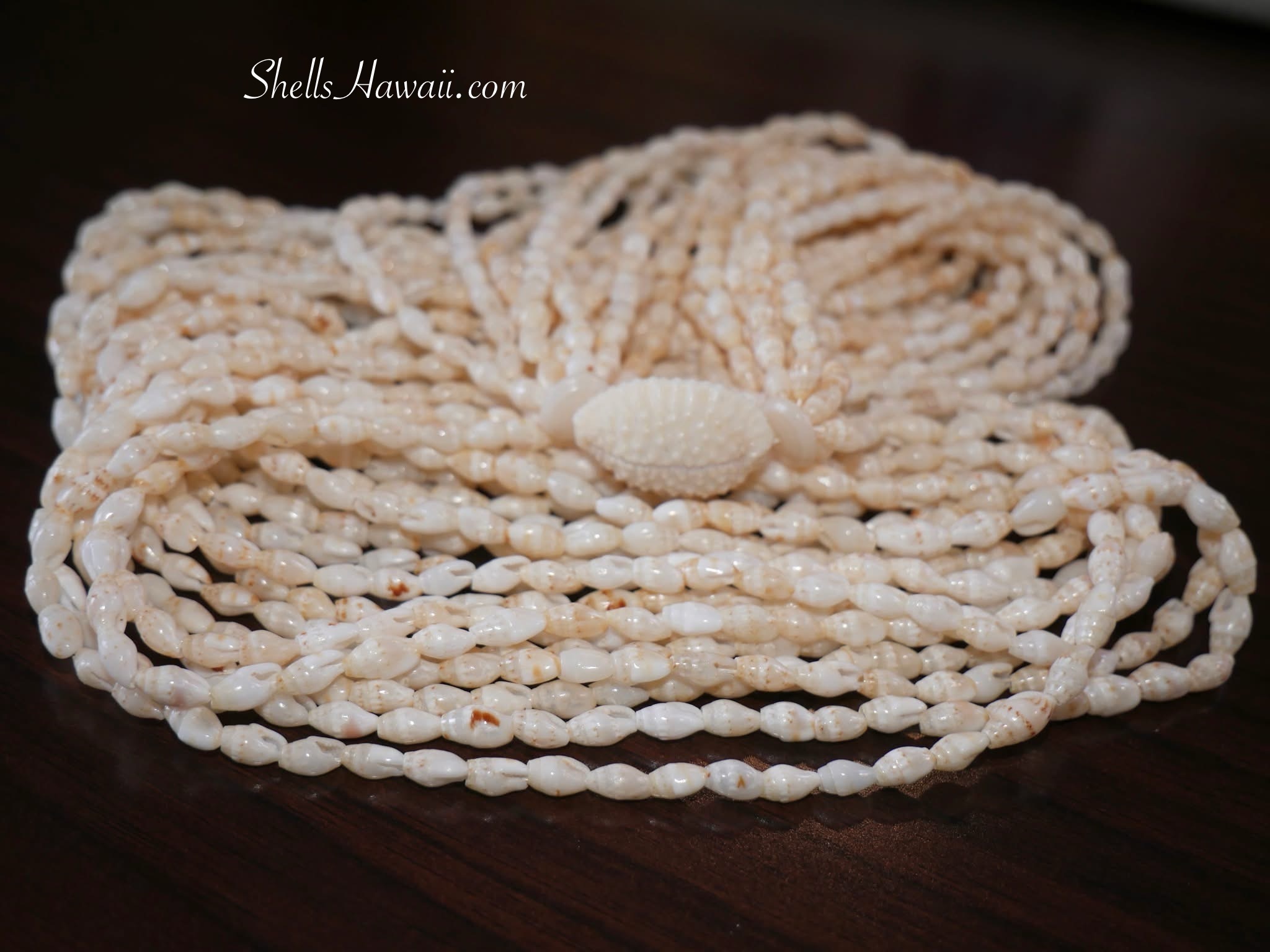
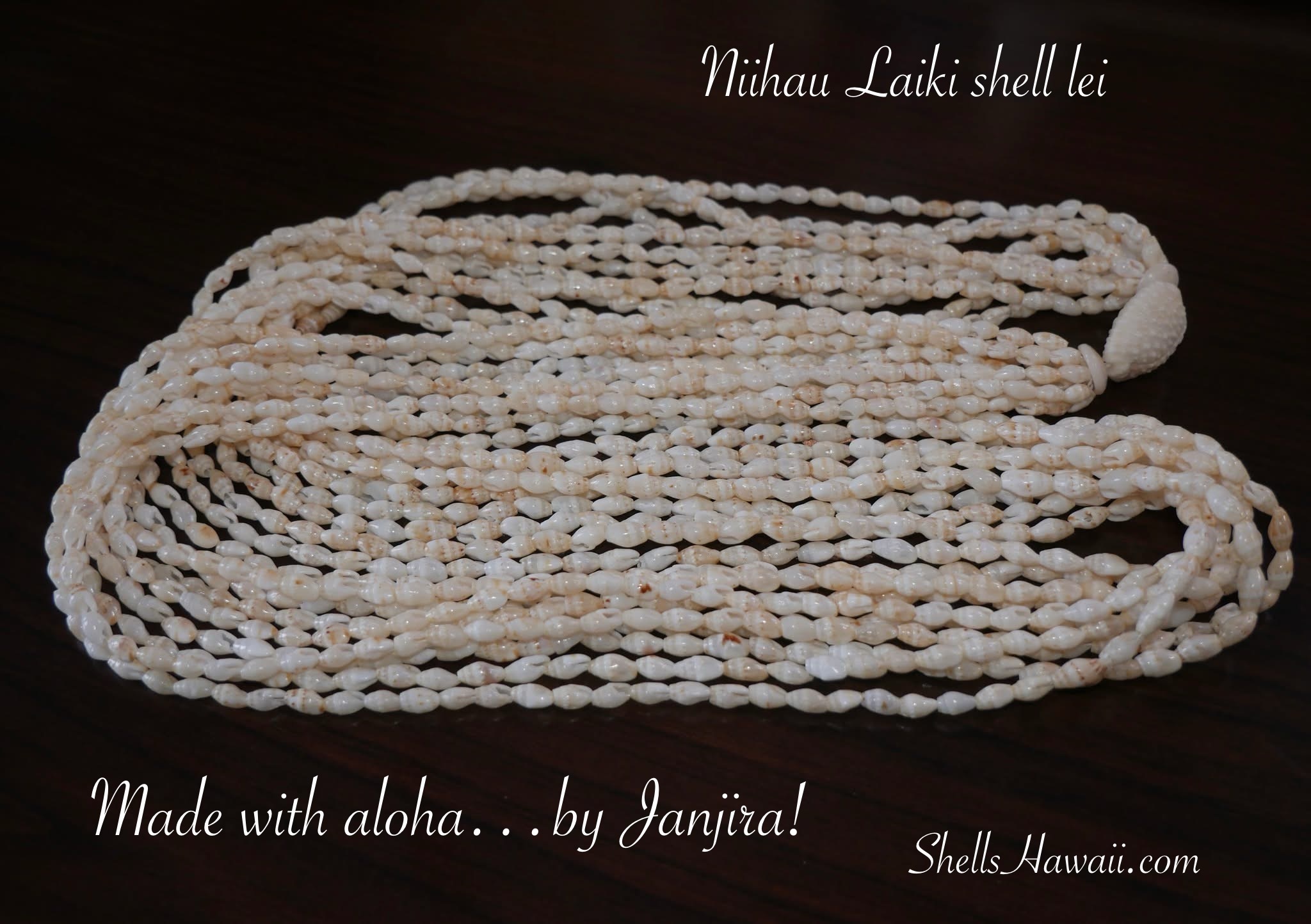
I also love combining Laiki with Kahelelani shells to create bold, four-strand Kipona-style designs (you can see an example here: Laiki & Kahelelani Kipona Set). The contrast of slender Laiki and tiny colorful Kahelelani gives the jewelry a rich texture and depth.
And for something fun and truly unique, I use Laiki in my pineapple-style earrings. They’re playful, elegant, and always filled with aloha ❤️.
⚓ Cleaning the Sand Out — Why It Matters
Laiki shells are often used in wedding lei, long lei, and many-strand designs. If you look closely at raw shells, you’ll notice that almost every Laiki has sand stuck in the waha (the mouth or opening). For me, I clean the sand out of every single shell before stringing. It takes hours of careful work, but the difference is incredible. Once cleaned, the shells look polished and bright, and the final jewelry has that smooth, refined finish.
Poking Laiki shells is especially tricky. You have to be gentle not to crack the end of the lip. If the hole becomes too big, the shells won’t sit flat — instead, they’ll overlap each other, and the lei will lose that even, graceful flow. A neat, uniform Laiki lei is only possible through those quiet hours of cleaning, poking, and caring for each shell. That’s part of why Hawaiian rice shells carry such value — they require patience, practice, and skill with every strand.
➡️ In future blogs, I’ll be sharing more about this process, including:
-
Why is the sand so stuck in these little Laiki, Kahelelani and the Momi shells?
-
Where to poke the shells without breaking them.
-
Should I or Should I Not Clean the Sand Out from Niʻihau Shells Waha?
These details may sound small, but they’re the heart of what makes Niʻihau shell jewelry truly shine ✨.
✨ Gratitude for Every Tiny Treasure
Laiki shells may be small, but they carry big meaning — especially when you know the work and love that goes into every strand. Whether I’m sorting them by color, cleaning out the sand, stringing them into multi-strand pieces, or matching them with Kahelelani, each step is done with care and joy.
Every Laiki shell lei is completely one of a kind. The colors, sizes, and shapes will never line up exactly the same way twice. So when you wear Niʻihau shell jewelry made with Laiki, you’re wearing a treasure from the ocean, filled with aloha, that no one else in the world has.
➡️ If you’d like to keep learning, you can read my blog Why Niʻihau Shells Are So Rare and Valuable — a story that helps explain the time, love, and patience behind each creation.
✨ And stay tuned — my next blog will dive into the world of Momi shells, another beautiful cousin in the Columbellidae family, each one full of color and mystery.
Mahalo for learning about Laiki shells with me today ✨.
With aloha,
Janjira!❤️
 USD
USD

